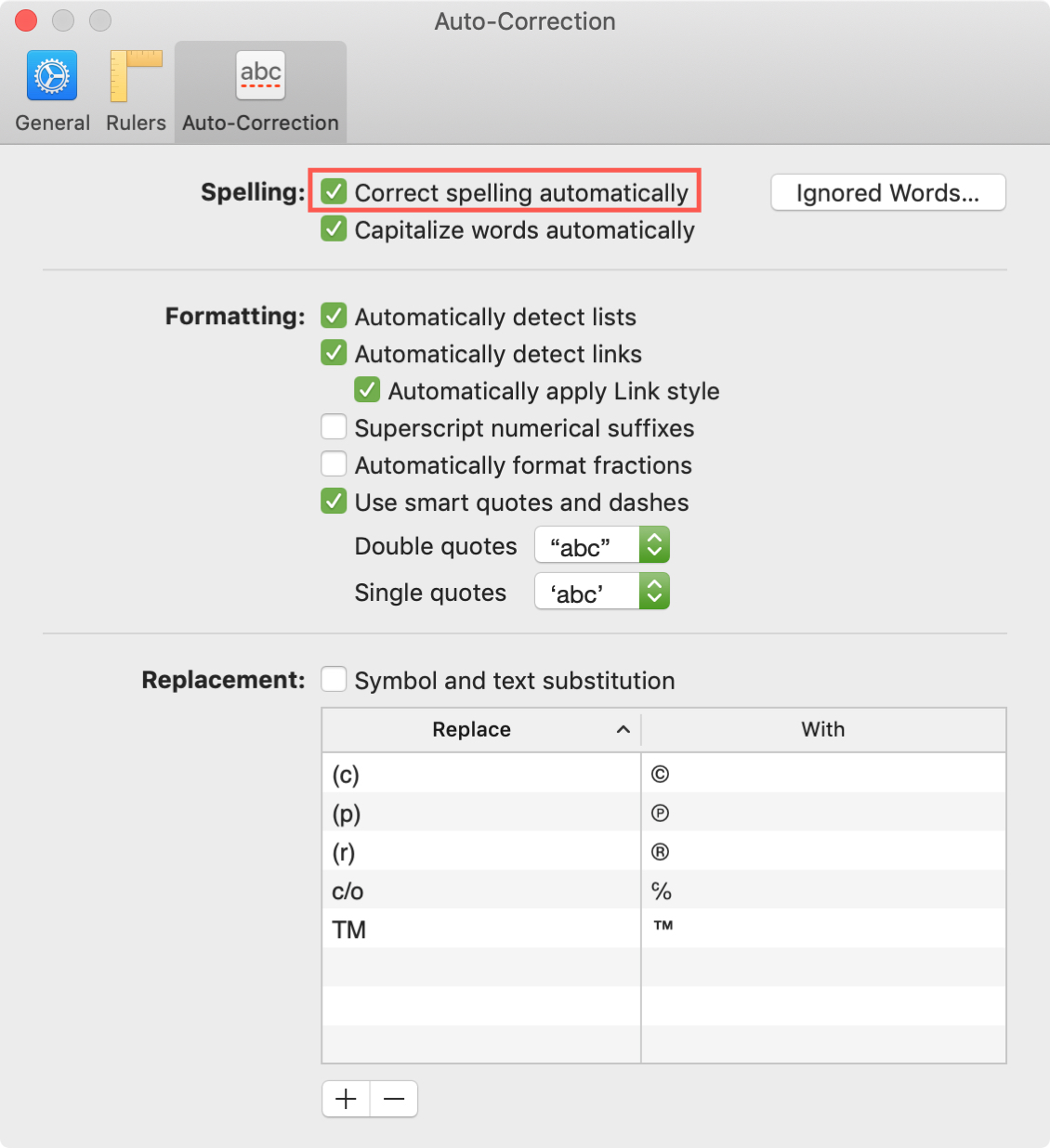How To Activate Spell Check In Latex For Mac
- How To Activate Spell Check In Latex For Mac Computer
- How To Activate Spell Check In Latex For Mac Free
I have an NSTextField that I would like to enable 'as-you-type' spell checking. When I load my application I can do this from the Menu Bar Edit Spelling and Grammar Check Spelling While Typing. 6 o'clock hold on a target. I would like this option to be enabled by default. Check what language macOS thinks it should be checking your spelling in. You should look in two places to see if macOS preferences changed: In Safari or any app that lets you type, click in a.
This morning, while working on a manuscript, I was looking for basically any reason to procrastinate. I usually use Overleaf for working on LaTeX documents, but just to mix things up, I decided to use Emacs instead. As I was happily typing away (I love Emacs), I realized that I was making a ton of spelling errors. “This would be so much better with a spell checker. Should I use TextEdit instead?”. Then, I remembered that I was using Emacs, which can be pretty muchwhatever you want it to be. It turns out that spell cheking in Emacs was only a quick Google search away: Flyspell is part of Emacs and provides on-the-Flyspell checking through a minor mode. Let’s set it up!
It is possible to add spell check settings into your source code. This is to help with file specific issues that may not be applicable to the entire project. All settings are prefixed with cSpell: or spell-checker. Disable- turn off the spell checker for a section of code. Enable- turn the spell checker back on after it has been turned off. To spell check a single LaTeX (.tex) file you issue the following command: aspell -lang = en -mode = tex check file.tex Once you’ve started aspell it shows you a text-based interface. There you can browse any found spelling errors and fix them in-place.
Setting up Flyspell
Setting up Flyspell is really easy. Just add the following to your .emacs file (or wherever you keep your Emacs initialization file):
This will enable flyspell-mode for text-mode and any modes that are derived from text-mode such as log-edit-mode and change-log-mode. If you don’t want spell checking on certain modes derived from text-mode you can disable them. For example, if we wanted to disable flyspell-mode for the two modes mentioned above, we could add this to our .emacs file:

If you’re using a Mac, you may need to add the following Elisp code to your config file as well in order for Flyspell to pick up the two-finger clicks (right-clicks):
Once you’re finished editing your init file, don’t forget to run M-x eval-buffer or to restart Emacs so that the changes take effect.
Using Flyspell
Once you’ve made the above changes to your Emacs config file, using Flyspell is as easy as opening up a file for which Emacs uses text-mode. Depending on which spell checking software is installed on your system, when opening a new text file, you should see a message at the bottom of the Emacs window about starting a new process with the default dictionary. Something like this:
If you try and open a text file and instead get an error,

Error enabling Flyspell mode:(Searching for program no such file or directory ispell)
then you need to install a spell checking program on your computer. There are many options, but Flyspell uses Ispell by default, so I went with that one. It’s available in most package managers: on a Mac you run brew install ispell and on Linux, apt-get install ispell or something similar will work. Once Ispell is installed, restart Emacs and you should be good to go.
Working with Flyspell is easy as well. Just type away and Flyspell will check your spelling on the fly. Incorrectly spelled words will get a nice little red squiggly line underneath them. To correct words or to add words to your personal dictionary, just right-click (or two-finger-click on a Mac) on the word you want to fix and an option box will pop up. There, you can either pick from one of the suggusted spellings or add the word to the dictionary. Simple, right? Here is a little gif showing all that in action:
Removing words from the dictionary

What happens if you add a word to the dictionary on accident and want to remove it? That’s easy as well. Checking man ispell, you will see a section called FILES that lists all the important files Ispell uses for its spell checking. My default dictionary is English, so my personal Ispell dictionary can be found here: $HOME/.ispell_english. To remove a word from the dictionary, just open that file in your favorite text editor (Emacs, obviously!) and remove the word. For it to take effect, you will likely have to close and restart Emacs.
Running Flyspell on any type of buffer
How To Activate Spell Check In Latex For Mac Computer
One last thing to mention is that if you want to run Flyspell on a buffer that isn’t currently using flyspell-mode you can run M-x flyspell-buffer to check the spelling of the current buffer. This can be useful if you want to do a quick check of some source code or something similar.
Wrap up

And that’s it! Of course, there is a lot more you can customize, like shortcuts, using different dictionaries and spell checking programs in place of Ispell, and even setting up spell checking for comments in source code! See the Flyspell entry in the Emacs wiki for more information.
If you enjoyed this post, consider sharing it on Twitter and subscribing to the RSS feed! If you have questions or comments, you can find me on Twitter or send me an email directly.